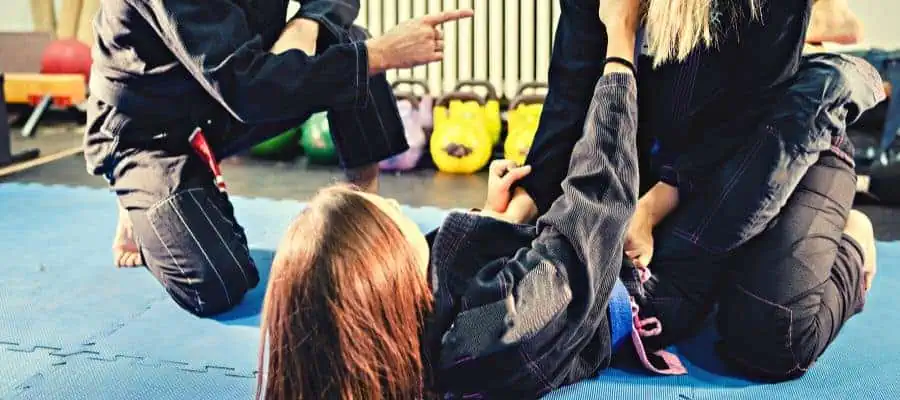In the world of Brazilian jiu-jitsu (BJJ), a martial art renowned for its ground-fighting and submission techniques, the question of whether weight matters stirs up considerable debate. Can the heavier and stronger practitioner always use their mass to overpower a lighter opponent?
Experts affirm that weight has a role, but it is not the deciding factor. Proficiency in technique, combined with attributes like flexibility and tactical acumen, often trumps brute strength. However, in competitions, BJJ is divided into weight classes for both gi and no-gi events to level the playing field and promote fairness. This is because when skill levels are comparable, weight and strength can tip the scales in one’s favor. It’s also why heavyweights tend not to perform the same acrobatic moves as lighter fighters, adapting their game to leverage their size.
Moving beyond tournaments, in everyday training, mixed-weight sparring sessions are common and encouraged as they force practitioners to adapt and refine their technique, ensuring that a weight advantage doesn’t become a crutch. Here, students of BJJ learn that while weight does matter, it is the harmonious blend of skill, strategy, and physical attributes that creates a successful martial artist.
The Role of Weight in BJJ Competitions

In Brazilian Jiu-Jitsu (BJJ), weight is a pivotal factor that levels the playing field and often dictates the dynamics of a match. Competitors are classified into weight classes to ensure fairness, as size can influence the amount of leverage and control a practitioner can exert over their opponent. These weight divisions are designed to match peers of comparable weights, minimizing advantages purely based on weight and emphasizing skill, technique, and strategy.
Weight classes differ among various BJJ organizations but usually follow a similar progression from lighter to heavier categories. For example, in gi competitions, males may compete in divisions that range from Rooster (up to 127.5 lbs) to Ultra Heavy (over 222 lbs), while females may see divisions from Light Feather (up to 118.5 lbs) to Heavy (over 175 lbs), with distinct strategies associated with each class.
Making weight for a BJJ competition involves accurate measurement, with competitors typically weighing in wearing their gi or no-gi attire, depending on the event rules. Successfully making weight is crucial, as failing to do so can result in disqualification or having to compete in a higher weight bracket.
Below is a table highlighting typical BJJ weight classes:
| Gender | Division | Weight Limit |
|---|---|---|
| Male | Rooster | <= 127.5 lbs |
| Male | Light | <= 154.5 lbs |
| Male | Medium Heavy | <= 195 lbs |
| Male | Ultra Heavy | > 222 lbs |
| Female | Light Feather | <= 118.5 lbs |
| Female | Middle | <= 152.5 lbs |
| Female | Heavy | > 175 lbs |
Strategy varies by weight class, with lighter classes favoring agility and speed, while heavier divisions might focus more on power and pressure. Strategizing for competition, including diligent planning on weight management, becomes as integral as honing BJJ techniques.
Techniques, Training, and Physical Attributes

In Brazilian Jiu-Jitsu (BJJ), the importance of weight is often debated. While heavier individuals may have an advantage in terms of pure strength, BJJ places a significant emphasis on technique and leverage.
A lighter grappler, endowed with skillful techniques and strategies, can effectively counter a heavier opponent. Thus, whether one is heavy or light, training should be tailored to maximize each athlete’s physical attributes and conditioning while also focusing on perfecting techniques.
Leverage and Technique Over Strength
The concept of leverage is fundamental in BJJ. It allows a lighter grappler to employ sweeps or secure submissions without relying on brute force. For example, using an opponent’s weight against them during a sweep demonstrates technique taking precedence over strength.
Training Strategies for Various Body Types
Training strategies must adapt to the individual’s body type. Heavy grapplers might focus more on developing pressure and control, whereas lighter grapplers often benefit from practicing fast-paced techniques to negate the strength of bulkier adversaries.
- Heavy Grapplers:
- Emphasis on control techniques.
- Use of pressure to force mistakes.
- Light Grapplers:
- Quick transitions.
- Escapes and mobility-centered drills.
Maximizing Athletic Ability and Conditioning
Strength and conditioning are critical for all practitioners to ensure they can maintain a dominant position and avoid becoming tired during a match. Strength training tailored to an athlete’s size and weight class can enhance their ability to execute techniques and maintain advantage throughout the roll. Athletes must also work on their cardiovascular conditioning to avoid fatigue which can lead to mistakes in technique execution.
| Weight Class | Conditioning Focus | Training Examples |
|---|---|---|
| Lightweight | Cardiovascular endurance | Running, Cycling |
| A mix of endurance and strength | Mix of endurance and strength | Interval training, Kettlebells |
| Heavyweight | Strength and pressure resistance | Olympic lifting, Drilling with heavier training partners |
*Please note that “Lightweight,” “Middleweight,” and “Heavyweight” are generalized terms and should be adjusted per the specific guidelines of the sport or organization.
By catering to the unique demands of their body type and weight class, BJJ practitioners can ensure they are prepared for both training and competition.
If this article was helpful to you, don’t forget to add it to your Pinterest board.
Recent Posts
What is Manachai's Fighting Style? Unveiling Muay Thai Mastery
Manachai, a celebrated figure in the Muay Thai world, has captivated audiences with his exemplary martial prowess. Hailing from the heartlands of Thailand, his name is synonymous with the art of...
What Was Chamuekpet Hapalang's Fighting Style? Unveiling Techniques
Chamuekpet Hapalang was a renowned figure in the world of Muay Thai (record 200-48-2), embodying a fusion of Muay Bouk and Muay Khao styles. Originating from Thailand, the art of Muay Thai is known...

